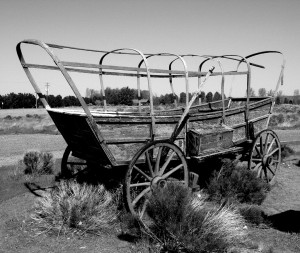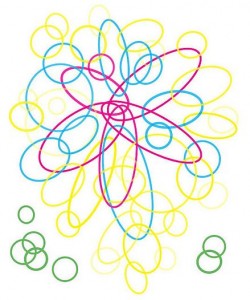The Three Biggest Challenges: Going from Author to Entrepreneur
In all the books, online tutorials, and other guidance that I’ve studied since releasing my latest book (under the Mourning Dove Press imprimatur) over a year and a half ago, not a single source mentioned any of what I found to be the three biggest challenges confronting an author-turning-entrepreneur. Not one! And certainly, none of them has offered a means for dealing with these challenges.
Perhaps its because there’s a certain psychological nature to this. However, I’ve come across many “success coaches” and “business coaches” who address a wide range of “psychological aspects” in their coaching. Not a one has come close to any of these.
So let me dive in. These are the three biggest hurdles facing anyone in the midst of the author-to-entrepreneur transition. I’ll outline them briefly in this post, and suggest specific strategies for mastering the transition – and dealing with each of these challenges – in the next three postings.
The Three Biggest Challenges
- Shifting Engagement Strategy: from “Extreme Introversion” to “Extroversion,”
- Shifting Focus: from “Tight Inward Focus” to “Ever-Expanding Outward” Locus of Attention, and
- Shifting Management Strategy: from “Extreme Simplicity” to “Extreme Complexity.”
Not a one of these is trivial. In fact, any one of these – if not addressed very successfully – will completely derail an emerging author – or a product developer, in the case of a “skunkworks”-type product development scenario.
Why Being an Author is Like Being in a “Skunkworks”
The analogy of being an author to being part of a “skunkworks” team is pretty useful.
SeachCIO defines a “skunkworks”:

Skunk, courtesy of the Village of the Niles.
A skunkworks (also known as Skunk Works) is a small group of people who work on a project in an unconventional way. The group’s purpose is to develop something quickly with minimal management constraints. Skunkworks are often used to initially roll out a product or service that thereafter will be developed according to usual business processes.
The original “Skunk Works” team was a specialized Lockheed Martin team that developed an advanced fighter jet during WWII. While a number of people still think that the “skunkworks” term refers to the hygiene habits of the developers, it really is supposed to refer a moonshine factory in the then-popular cartoon strip L’il Abner. Be that as it may – two “rules” (of the fourteen governing a skunkworks) practically necessitate holding one’s nose:
- Very small team: Rule 3 states that: “The number of people having any connection with the project must be restricted in an almost vicious manner.” Extremely small team; extreme isolation. In an author’s case, this could mean a team consisting of “me, myself, and I” – and that will continue until the project is far enough advanced to include a crucial few others, such as editor and copyeditor, etc. Many early-stage authors will not have a publisher or agent.
- Extreme isolation: Rule 13 states that: “Access by outsiders to the project and its personnel must be strictly controlled.” Other rules reinforce the themes of tight focus (cutting out any and all forms of bureaucratic interference), together with rapid-development expediency .
The result?
People who excel in a “skunk works” environment are not those who “play well with others.” They live to create their dream. They are at least somewhat obsessive. Perhaps they are very obsessive.
All of this – while leading to successful goal-achievement – is the antithesis of being sociable.
No company would ever dream of putting an effective “skunkworks” person into a regular engineering job, and far less into marketing. However, this is exactly the challenge that confronts any author who is shifting from project-completion to marketing.
Asking an author or product-developer to start marketing their work really is like asking oneself to go from being a “skunkworks” type of person to a “marketing” person, practically overnight.
Challenge?
You bet.
No wonder very few successfully overcome this.
It’s Not Just the Workload, It’s the Complexity

Complexity – when every direction seems “true north.”
No one – amongst all the advice-givers whom I’ve studied so far – has really addressed the core essence of the second and third biggest challenges:
- Going from “tight focus” to “ever-expanding” task-loads, and
- Going from “extreme simplicity” to “extreme complexity”.
Here’s the essential nugget underlying these last two challenges:
Every direction appears to be “true north.”
There is so much to be done, and all of these different tasks are divergent.
When we were focused on book or product completion, everything that we did was convergent. A task might have been difficult (in some ways), yet it was essentially simple in that it brought us closer to a well-defined goal.
For an author, every step – every thought – is focused on getting just a little closer to that “magic moment” of pushing the final “upload finished work” button. Everything that the author does is convergent – it is directed towards the same goal.
In contrast – in very great contrast – everything that is done after pushing the “upload” button is divergent. Everything “fans out.”
There is a nearly innumerable list of tasks: Develop the website. Create and perform in book signing events, TV and radio interviews, and talks before various audiences. Write press releases. Get reviews, both on Amazon and in media. Get names of people, get them into the database, set up continued connection with them. Build an ongoing “platform” of blogging.
For the emerging author (or the entrepreneur with a new product), the challenge is that every single one of these tasks is important. There’s not a single one that can be deferred indefinitely.
In a sense, any single one of these can become the “most important thing” – the “organizing theme” for activities. Any one of these – or all of them – can seem to be “true north.”
The result? Confusion. Efforts in one arena, then another.
No one of these is the answer, of course. And yet, they all are.
Also – no single one of them is typically “income-producing.” Certainly not to the extent that an author/entrepreneur would get sufficient feedback to say, “Yes. This is it. This is the path that I should follow.”

Conestoga wagon, in B&W, by Ross Sharrock.
Not surprisingly, many give up during this stage. The author/entrepreneur simply burns out – not from overwork, but from confusion-based exhaustion. The lure of a regular day job, with a well-defined structure (in addition to a well-defined salary and benefits) becomes too much. Then, a well-done book or product is abandoned.
It’s reminiscent of some of the sadder (and perhaps more grisly) stories from the pioneers crossing the plains. Their Conestoga wagon – the vehicle that was supposed to get them to a new life in the “promised land” – was abandoned. And all hope was lost.
This sense of “all directions being true north” is what can make our time in our own “Valley of Death” or “Red Waste” – going from just-published to wildly-successful – prolonged and potentially fatal to our enterprise.
Solutions and Strategies
We now have a sense of the magnitude of the challenges confronting a new author or emerging entrepreneur. It’s not just the conversion from a “skunkworks”-type personality to a “marketer.” It’s not just the shift from “convergent” to “divergent” tasks. And it’s not even the complexity-management.
This is possible. There is a strategy.
This strategy will be the subject of upcoming blogs.
Join me – “Opt-In” using the form to the right. I’ll give you a “heads-up” when I publish the next strategic step that will help you decide on your own personal “true north” – and successfully survive your own “Valley of Death.”
Special Note: If you want to succeed with this strategy – the only one that I believe to be effective for the long haul – go back to the first blog in this series, Kingmaker, and do the exercises. Seriously. They count.
For the next posting in this series, go to:
Copyright Alianna J. Maren, 2013. All rights reserved.



